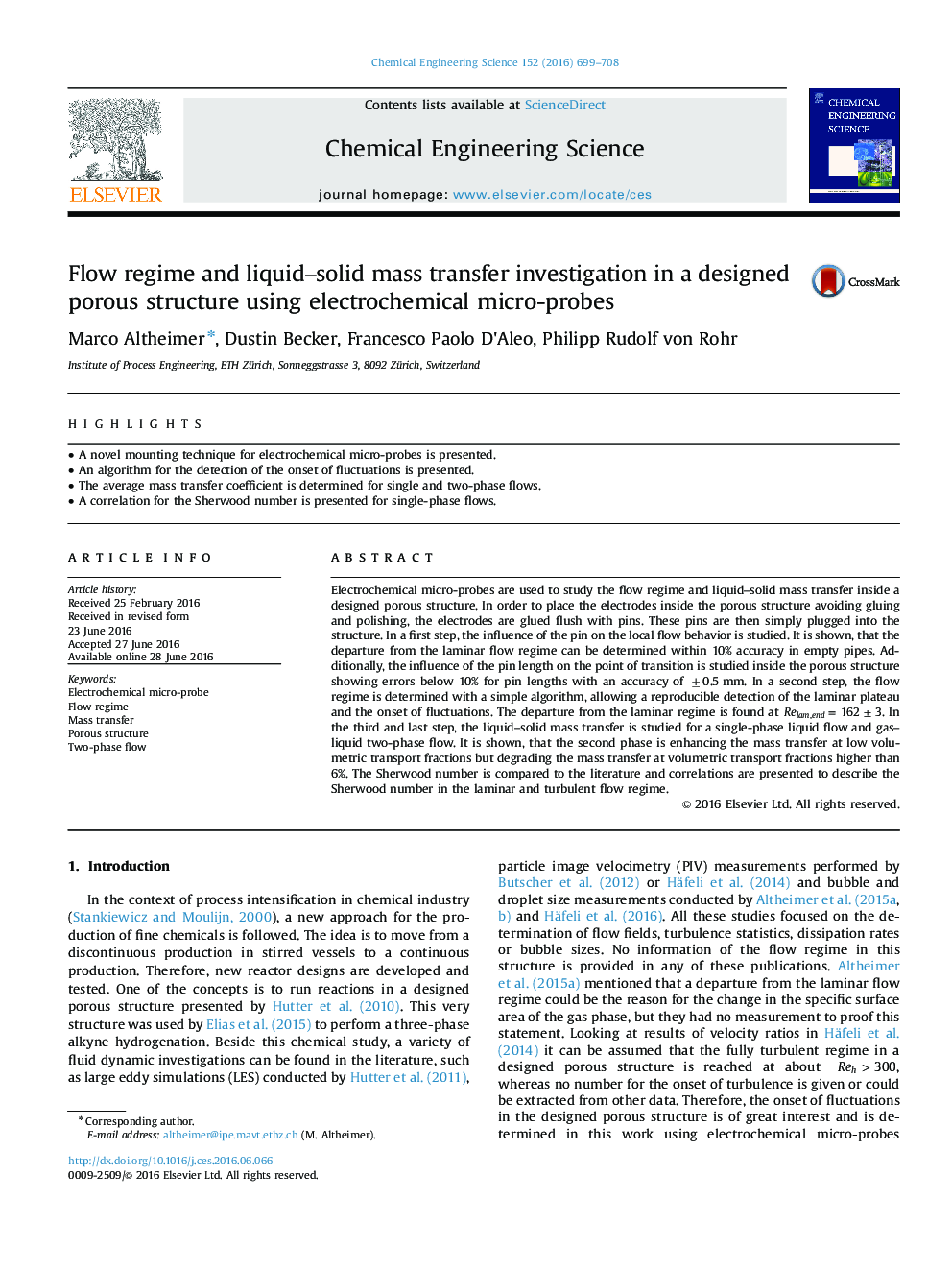| Article ID | Journal | Published Year | Pages | File Type |
|---|---|---|---|---|
| 6589099 | Chemical Engineering Science | 2016 | 10 Pages |
Abstract
Electrochemical micro-probes are used to study the flow regime and liquid-solid mass transfer inside a designed porous structure. In order to place the electrodes inside the porous structure avoiding gluing and polishing, the electrodes are glued flush with pins. These pins are then simply plugged into the structure. In a first step, the influence of the pin on the local flow behavior is studied. It is shown, that the departure from the laminar flow regime can be determined within 10% accuracy in empty pipes. Additionally, the influence of the pin length on the point of transition is studied inside the porous structure showing errors below 10% for pin lengths with an accuracy of ±0.5 mm. In a second step, the flow regime is determined with a simple algorithm, allowing a reproducible detection of the laminar plateau and the onset of fluctuations. The departure from the laminar regime is found at Relam,end=162±3. In the third and last step, the liquid-solid mass transfer is studied for a single-phase liquid flow and gas-liquid two-phase flow. It is shown, that the second phase is enhancing the mass transfer at low volumetric transport fractions but degrading the mass transfer at volumetric transport fractions higher than 6%. The Sherwood number is compared to the literature and correlations are presented to describe the Sherwood number in the laminar and turbulent flow regime.
Related Topics
Physical Sciences and Engineering
Chemical Engineering
Chemical Engineering (General)
Authors
Marco Altheimer, Dustin Becker, Francesco Paolo D'Aleo, Philipp Rudolf von Rohr,
